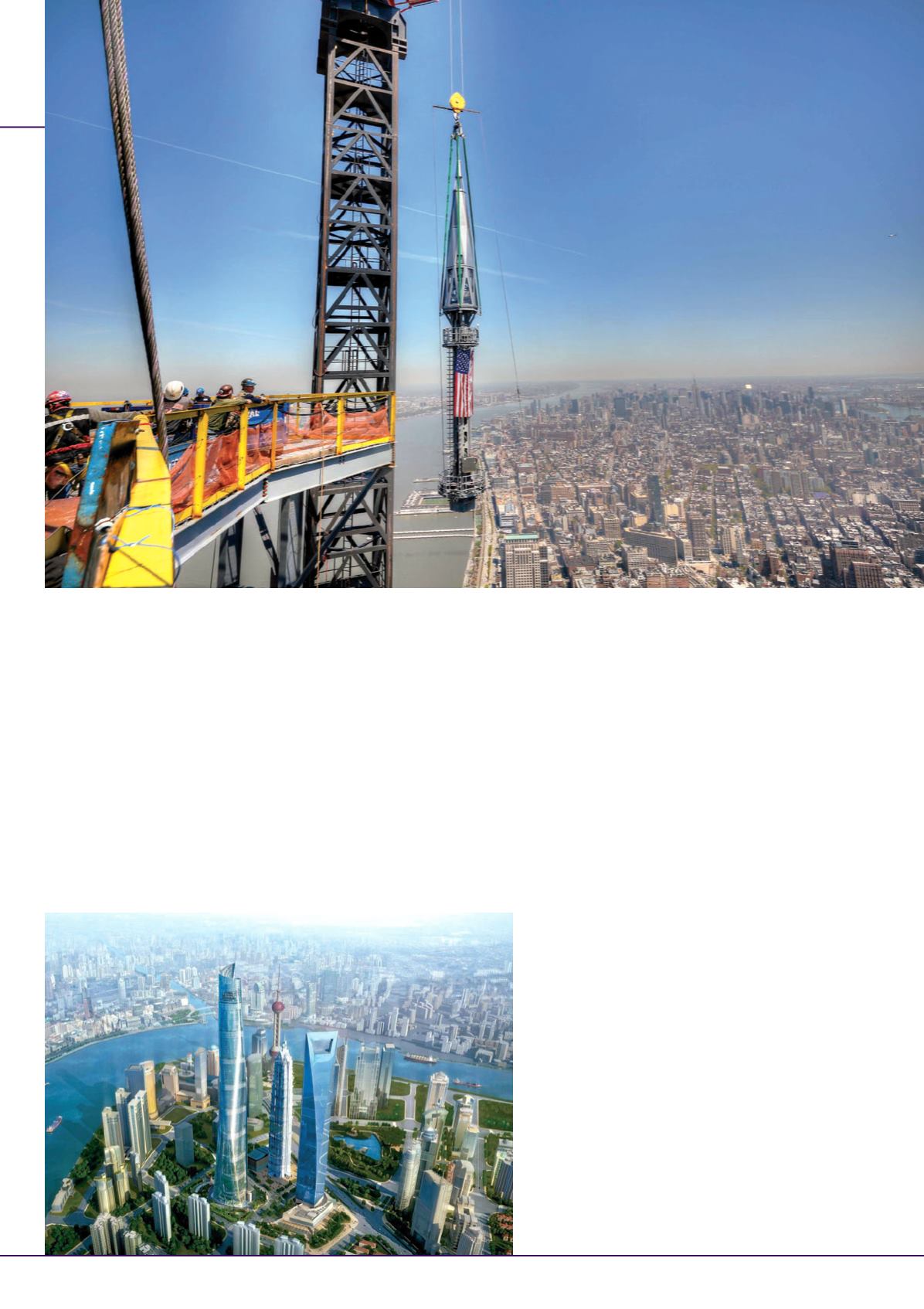
25
september 2013
international
construction
Stronger, faster and more light-weight equipment is increasing efficiency in the high-rise construction
sector, allowing developers to reach for the skies.
Helen Wright
reports.
The rise of the
super skyscraper
T
his year has seen the topping out of two 500 m+ tall high
rise buildings – the first was the 541.3 m One World
Trade Centre tower in New York, US, which became
the tallest building in the country when the final section of a
124.4 m steel spire was lifted in to position in May.
Then the 632 m Shanghai Tower in the Chinese city’s Lujiazui
commercial district became the second tallest building in the
world behind the 828 m Burj Khalifa in Dubai, UAE, when it
topped out in August.
But as any watcher of skyscraper developments knows, these
titles are never held for long. More super high-rise buildings are
planned around the world, including the 1 km tall Kingdom
Tower in Jeddah, Saudi Arabia. China is planning further 500
m+ developments, including the 838 m tall Sky City tower
>
The final section of a 124.4 m steel spire being lifted into
position on the One World Trade Centre tower in New
York, US, bringing the building to its full 541.3 m height
and making it the tallest building in the country.
The Shanghai Tower is the new, 632 m tall icon
in the Chinese city’s Lujiazui commercial district.
It was designed by architect Gensler and built by
Shanghai Construction at a cost of US$ 2.2 billion.
HIGH RISE
The rise of the super skyscraper


